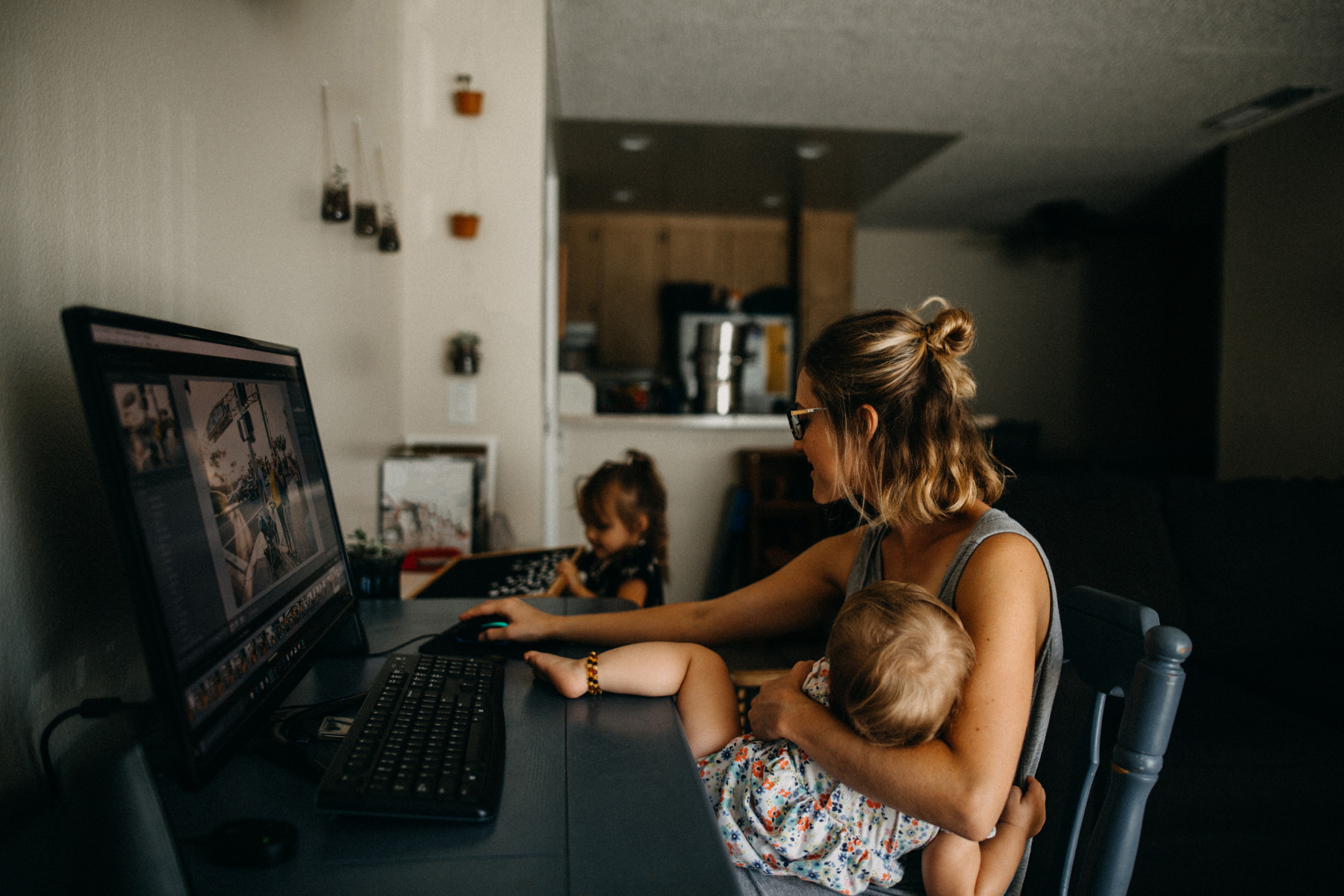To see how gender roles are changing, look to the workforce. Young women are now working at higher rates than ever, pursuing careers and financial stability, while young men are staying home and taking on a greater share of caregiving, according to new research by The Hamilton Project at the Brookings Institution first shared with The 19th.
This shift in the American labor force is narrowing the salary divide between men and women at work. It’s the result of decades of policy changes, most of them championed by women, to begin redesigning the economy to work for all.
The research found women in their 20s and 30s are more likely to be working than older cohorts, with about 78 percent of those born in the 1990s employed. For their moms’ generation, the figure was about 75 percent.
For men, the opposite is true.
About 88 percent of men born in the 1990s are in the labor force. In the 1960s, more than 92 percent of men in their 20s and 30s were working. The research analyzes Bureau of Labor Statistics data through May 2025.
Lauren Bauer, the author of the study, said these changes are due to multiple factors. Some are based on a growing desire from women to work more; some if it is out of necessity as the cost of living rises.
Six decades ago, women could still be fired from a job if they got married; almost all sole breadwinners were men. Women were spending 446 percent more time on care work than men. What Brookings’ research makes clear? It’s not your mama’s labor force anymore.
“This is a story of the American labor market being able to better accommodate women over time, such that younger women are entering at a higher rate and not having to leave if they don’t want to,” Bauer said.
Teleworking, for example, increased fourfold from 2019 to 2023 and, according to Brookings’ research, parents of young children are now the most likely to be working remotely. A third of mothers ages 25 to 64 — considered “prime working age” — who have a child under 5 are working remotely at least some of the time. They’re also the group with the highest rate of fully remote work. Fathers of young children are also the most likely group of men to be working from home.
Overall, men are taking on more caregiving responsibilities than prior generations. The share of men ages 25 to 34 who are not working at all because they are providing care for family members doubled from 2001 to 2025, though it’s still a small share representing 2 percent of men not working.
For women, especially, increased flexibility has helped drive a return to the workforce since the pandemic, when women’s unemployment skyrocketed. One of the reasons women left the labor force in 2020 was because thousands of child care centers closed and millions of mothers left jobs to care for children.
It burst open the conversation on the value of caregiving. Workplaces relaxed their work-from-home policies and the federal government pumped millions into the child care sector to keep day cares open. Some research shows that effort helped women return to work in record numbers, so that in September 2023, labor force participation among women with children under 5 hit an all-time high.
“The American economy owes prime age women, especially mothers, a debt of gratitude for helping the economy climb out,” Bauer said.
Still, not all of what’s driving women to the workforce is a desire to be at work.
For years now, American motherhood has been shifting, leading to plummeting birth rates for women in their 20s and slowest population growth in nearly a century. More and more people are delaying childbirth, and the reason is often financial. Rising child care costs, housing costs and student loan debt are major factors influencing decisions around when and whether to have a child. The cost of child care alone is outpacing inflation nationwide and, in almost every state, surpassing rent and mortgage costs.
That delay in childbirth is leading to higher work participation rates for younger women, some of whom want to be on firmer footing with their careers before they have children, Bauer said.
Before a woman has a child, the gender pay gap is almost nonexistent. It only starts to widen after — what researchers call the “motherhood penalty.” Research has found there is a measurable bias from some employers around how competent or productive mothers are at work, leading to lower pay.
Another challenge is that the United States remains the only industrialized nation in the world that doesn’t guarantee its workers some paid time off for the birth of a child. Giving workers paid leave actually helps them stay at their jobs, studies have found.
Kathryn Edwards, an economist who specializes in inequality, said that workers who don’t have access to paid leave are often pushed out of their jobs either because they have to quit or they are fired when they have a child.
“It’s easier to go back to your old job that’s waiting for you than to find a new one,” Edwards said.
If women don’t return to work after childbirth right away, those gaps in their resumes can really snowball over the course of a career, leading to much lower lifetime earnings.
So while desire to work more is certainly part of the story, Bauer said, “it’s impossible to think that need is not a dominant force here.”
Feeling overwhelmed by the news? The 19th is considering new ways to keep you informed. But we need your input! Fill out this quick survey to share your thoughts.







